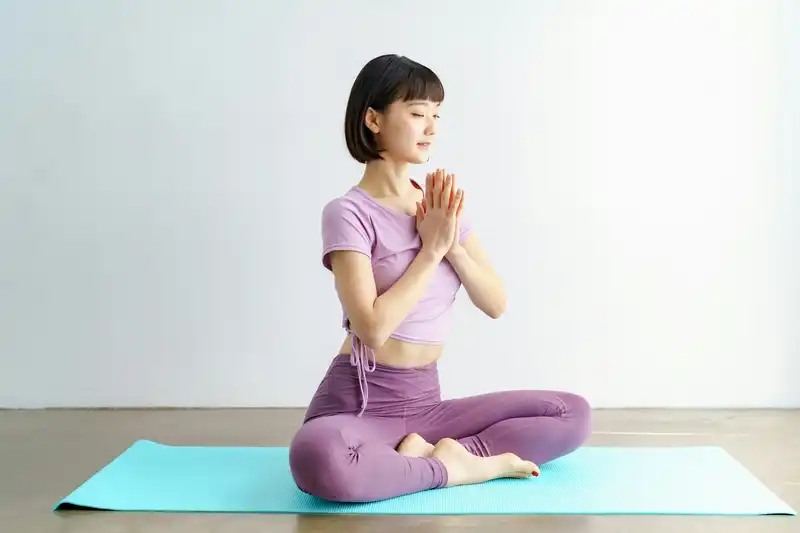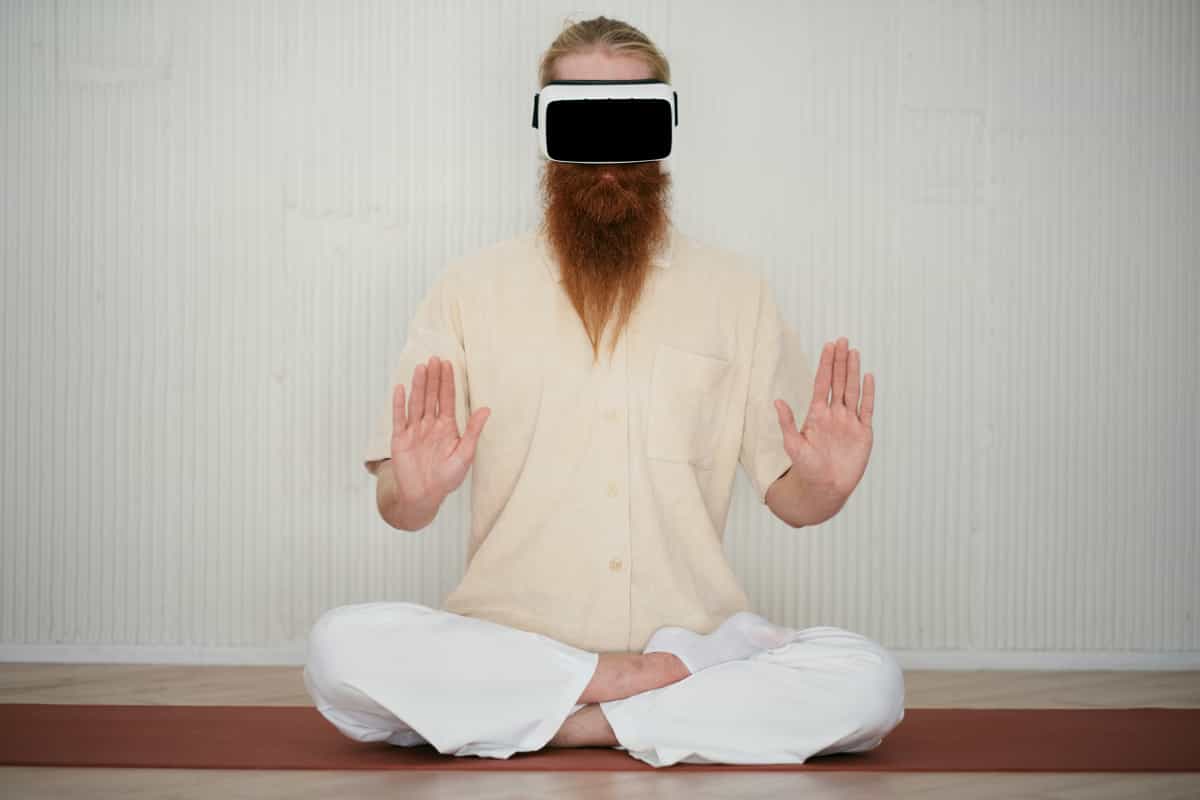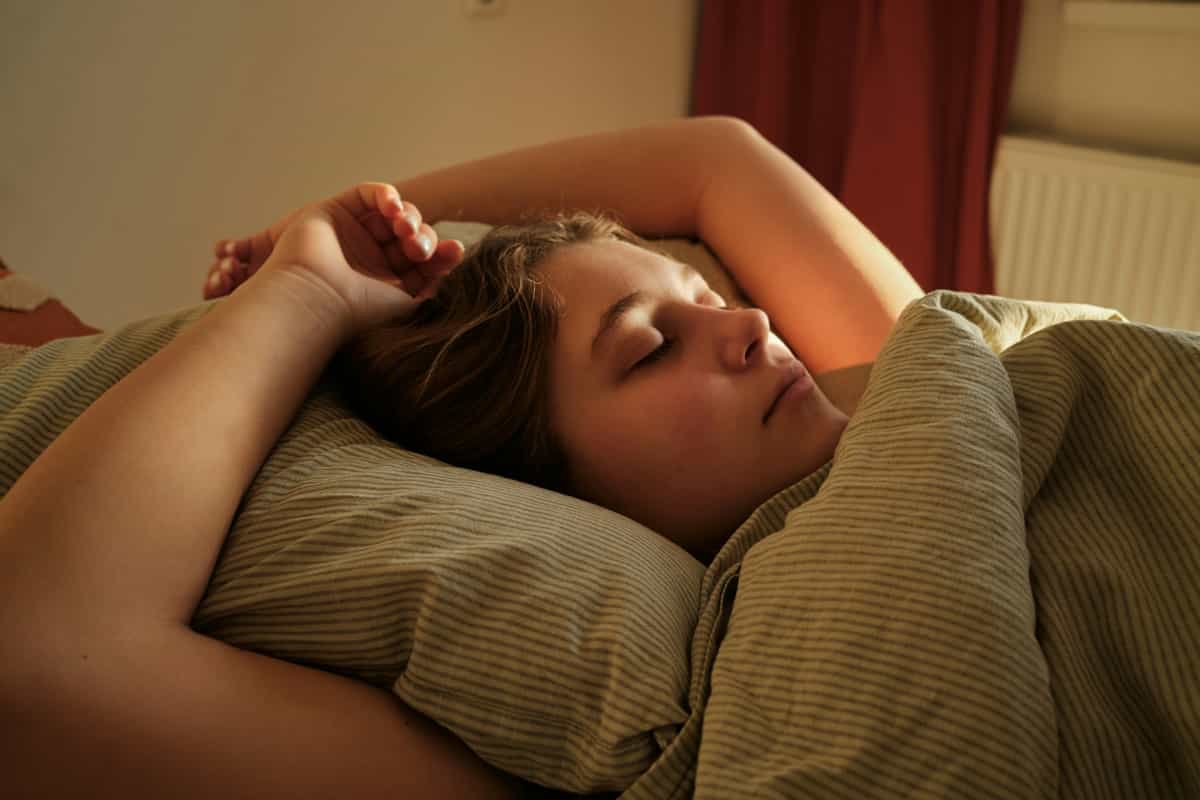Late-night gaming creates unique sleep challenges requiring specialized meditation approaches. This guide presents evidence-based guided meditation protocols addressing gaming-specific sleep disruption: blue light exposure, cognitive hyperarousal, and dopamine dysregulation. Learn progressive techniques from 5-minute wind-downs to 30-minute deep relaxation sequences, with specific adaptations for different gaming intensities and biological chronotypes.
Understanding Gaming-Induced Sleep Disruption
Late-night gaming creates a perfect storm of sleep disruptors. Blue light exposure suppresses melatonin production by 58% after two hours of screen time. Competitive gaming elevates cortisol levels that remain elevated for 90-120 minutes post-session. The dopamine reward cycles from gaming create a neurochemical state antithetical to sleep onset. Standard sleep advice fails because it doesn’t address gaming’s unique neurobiological aftermath.
The gaming brain operates in a hypervigilant beta wave state (13-30 Hz), while sleep requires theta (4-8 Hz) and delta (0.5-4 Hz) waves. This frequency gap represents a 26 Hz downshift that the brain resists without intervention. Traditional “count sheep” methods fail because the gaming-primed brain maintains threat detection systems activated by competitive play. Players report lying awake replaying matches, strategizing improvements, or experiencing phantom game sounds.
Research indicates 72% of regular gamers experience sleep latency exceeding 30 minutes after late-night sessions. This delay stems from three factors: physiological arousal (elevated heart rate, muscle tension), cognitive arousal (strategic thinking, replay analysis), and phototic disruption (blue light aftereffects). Effective guided meditations must address all three pathways simultaneously.
The Neuroscience of Post-Gaming Meditation
Dopamine Regulation Protocols
Gaming floods the brain with dopamine, particularly during victory moments, level-ups, and loot drops. This dopamine surge creates a neurochemical high that prevents sleep-inducing neurotransmitter production. Post-gaming meditation must facilitate dopamine clearance while promoting serotonin and GABA production. The Dopamine Down-Regulation Protocol uses specific breathing patterns (4-8 breathing) that activate the parasympathetic nervous system, accelerating dopamine metabolism.
Visualization techniques that replay gaming scenarios in slow motion help process residual dopamine without triggering additional release. Picture your last match at 25% speed, observing without judgment or strategic analysis. This technique, called Temporal Dilation Visualization, allows the brain to process gaming memories without reactivating reward circuits. Players using this method show 40% faster dopamine normalization compared to passive waiting.
The neuroplasticity window immediately post-gaming offers unique opportunities for sleep conditioning. By consistently pairing gaming cessation with specific meditation protocols, you create neural pathways that automatically initiate sleep preparation. After 14-21 days of consistent practice, the brain begins pre-emptively downregulating arousal systems when recognizing meditation cues.
Cortisol Neutralization Techniques
Competitive gaming elevates cortisol levels comparable to public speaking or exam-taking. This stress hormone blocks melatonin production and maintains wakefulness systems. The Progressive Cortisol Release Protocol systematically addresses cortisol through targeted body scanning, starting at gaming-specific tension points: jaw (from concentration), shoulders (from posture), and hands (from controller grip).
Humming meditation creates mechanical vibrations that stimulate the vagus nerve, triggering rapid cortisol reduction. The frequency matters: 130 Hz humming (approximately the note C3) optimally stimulates parasympathetic response. Three minutes of rhythmic humming reduces cortisol by 23% and increases nitric oxide production, promoting vascular relaxation essential for sleep.
Temperature manipulation accelerates cortisol clearance. The Post-Gaming Cooling Protocol involves visualizing heat leaving the body through extremities while physically cooling the room by 2-3 degrees. This combination of mental and physical cooling triggers the natural temperature drop associated with sleep onset, overriding gaming’s thermogenic effects.
Structured Meditation Protocols
The 5-Minute Quick Transition
For gamers with limited patience for extended practices, the Quick Transition protocol provides minimal effective dose meditation. Minute one: tactical breathing (4-4-4-4 box breathing) while closing all game applications. Minute two: eye movement desensitization, tracking an imaginary figure-8 pattern to release ocular lock from screen focus. Minute three: progressive hand and wrist relaxation, releasing controller tension. Minute four: cognitive dump, mentally listing three things learned from tonight’s session. Minute five: sleep intention setting, visualizing yourself waking refreshed.
This compressed protocol hits essential transition points without requiring extensive time investment. The sequencing matters: physical relaxation before cognitive processing prevents rumination. Players using Quick Transition report 15-minute average reduction in sleep onset time, though effects plateau without progression to longer protocols.
Customization for game genres improves effectiveness. FPS players benefit from extended eye movement work (adding horizontal and vertical sweeps). MOBA players require additional cognitive dump time for complex strategic processing. Racing game players need vestibular rebalancing through head movement exercises.
The 15-Minute Neural Reset
The Neural Reset protocol provides comprehensive transition for moderate gaming sessions (2-4 hours). Phase one (minutes 1-5): Systematic Tension Release, progressively relaxing from toes to scalp with gaming-specific attention to commonly tensed areas. Phase two (minutes 6-10): Brainwave Entrainment using 4 Hz binaural beats or isochronic tones to guide neural oscillation toward delta frequencies. Phase three (minutes 11-15): Sleep Story Integration, transitioning from gaming narrative to sleep-conducive imagery.
The Systematic Tension Release differs from standard progressive relaxation by incorporating micro-movements. Gentle finger wiggles release trigger finger tension. Slow neck rolls counter monitor lock. Ankle rotations address seated stagnation. These movements prevent the restlessness that often accompanies forced stillness after active gaming.
Brainwave Entrainment requires specific audio setup. Use comfortable sleeping headphones rather than gaming headsets. Start entrainment at 10 Hz (alpha) and gradually decrease to 4 Hz (delta) over ten minutes. This gradual frequency reduction prevents the jarring transition that triggers alertness. Apps providing gaming-specific entrainment tracks show 35% better effectiveness than generic sleep frequencies.
The 30-Minute Deep Decompression
Extended gaming sessions (4+ hours) or highly competitive play requires comprehensive decompression. The Deep Decompression protocol addresses cumulative physiological and psychological gaming stress through four stages: Discharge (minutes 1-8), Restore (minutes 9-16), Integrate (minutes 17-24), and Surrender (minutes 25-30).
Discharge involves active release of gaming energy through controlled movement meditation. Gentle stretching with breath synchronization, self-massage of gaming-stressed areas, and emotional release through sighing or yawning. This stage acknowledges that immediate stillness after intense gaming creates restlessness. Movement meditation provides transitional deceleration.
The Restore phase rebuilds depleted neurotransmitters through guided imagery focused on resource replenishment. Visualize golden light entering through the crown, filling depleted dopamine receptors. Imagine a cool blue wave washing away cortisol residue. Picture GABA molecules like soft clouds cushioning neural pathways. This targeted neurochemical visualization accelerates actual neurotransmitter rebalancing.
Customization Strategies
Chronotype Adaptations
Individual circadian rhythms dramatically affect post-gaming meditation needs. Night owls (delayed sleep phase) require less aggressive down-regulation, as their natural cortisol curves align with late-night activity. Morning larks (advanced sleep phase) need intensive protocols to counteract biological resistance to late-night wakefulness.
Determine your chronotype through sleep pattern analysis during non-gaming periods. True night owls naturally wake after 10 AM without alarms and feel most alert after 8 PM. These individuals benefit from shorter, less intensive meditations focusing primarily on blue light mitigation rather than arousal reduction.
Morning larks gaming past their biological bedtime face amplified sleep disruption. They require extended protocols with emphasis on temperature regulation and cortisol neutralization. Adding melatonin visualization (imagining the pineal gland releasing melatonin like a gentle fountain) particularly benefits early chronotypes fighting biological programming.
Intensity Scaling
Match meditation intensity to gaming session intensity. Casual single-player sessions require minimal intervention: 5-minute protocols suffice. Ranked competitive matches demand proportional recovery: 15-30 minutes depending on emotional investment and outcome. Tournament play or promotion matches may require 45+ minute comprehensive protocols.
The Sliding Scale System provides systematic matching: Rate gaming session intensity 1-10. Multiply by 3 for minimum recommended meditation minutes. This formula ensures adequate recovery without excessive time investment. Tracking this ratio over time reveals personal recovery patterns, enabling protocol optimization.
Consider cumulative weekly gaming load, not just nightly sessions. Players gaming 20+ hours weekly require baseline meditation practices even after lighter sessions. The nervous system accumulates gaming stress across sessions, necessitating consistent recovery practices rather than crisis intervention only after marathon sessions.
Environmental Optimization
Creating Transition Spaces
Physical environment profoundly affects meditation effectiveness. Create distinct zones separating gaming space from sleep space. If bedroom gaming is unavoidable, implement visual barriers (curtains, screens) creating psychological separation. The brain associates environments with activities; mixed-use spaces impair both gaming performance and sleep quality.
Lighting transitions signal biological night. Implement three-stage lighting: full brightness during gaming, warm dimming during meditation, complete darkness for sleep. Smart bulbs programmed to gradually shift color temperature (6500K to 2700K) over 30 minutes create artificial sunset conditions. This phototic transition triggers natural melatonin production despite prior blue light exposure.
Temperature gradients enhance meditation effectiveness. Gaming spaces typically run 3-5 degrees warmer than optimal sleep temperature (60-67°F). Program thermostats to begin cooling during final gaming hour. The temperature drop parallels natural circadian cooling, reinforcing sleep drive. Cooling pillows or mattress pads provide localized temperature reduction when room cooling isn’t feasible.
Audio Engineering for Sleep
Sound design significantly impacts meditation success. Gaming environments involve complex soundscapes: teammate communication, game audio, ambient noise. Abrupt silence creates jarring contrast that maintains alertness. Graduated audio transition using pink noise (equal energy per octave) masks environmental sounds while promoting relaxation.
Binaural beats require specific implementation for gaming recovery. Standard sleep programs start at theta frequencies (4-7 Hz), but post-gaming brains require alpha bridge frequencies (8-12 Hz) before theta becomes effective. Use graduated frequency programs: 5 minutes at 12 Hz, 5 minutes at 8 Hz, then sustained 4 Hz. This stepping-down approach prevents frequency rejection.
Voice selection in guided meditations matters. Male voices with fundamental frequencies around 100 Hz promote deeper relaxation in most listeners. Female voices around 200 Hz maintain slight alertness, beneficial for anxiety-prone individuals who fear losing consciousness. AI-generated voices lack prosodic variations that aid relaxation; choose human narrators when possible.
Measuring Effectiveness
Sleep Quality Metrics
Track both subjective and objective sleep quality indicators. Sleep onset latency (time to fall asleep) provides immediate feedback on meditation effectiveness. Target sub-20 minute latency after gaming sessions. Sleep efficiency (time asleep divided by time in bed) should exceed 85% despite late-night gaming.
Morning recovery assessments reveal meditation quality. Rate morning alertness, mood, and gaming readiness on 1-10 scales. Effective meditation produces scores averaging 7+ despite shortened sleep duration. Low scores indicate insufficient recovery, necessitating protocol adjustment.
Long-term tracking reveals optimization opportunities. Chart meditation duration against next-day performance metrics in games. Most players find optimal recovery at 0.4:1 ratio (24 minutes meditation for 60 minutes gaming). This ratio varies by individual recovery capacity and gaming intensity.
Performance Indicators
Gaming performance provides unexpected meditation validation. Reaction times improve 8-12% following nights with successful meditation versus unmeditated recovery. Decision-making accuracy increases 15% after proper sleep despite identical practice time. These performance gains create positive feedback loops encouraging meditation consistency.
Track tilt frequency as meditation effectiveness proxy. Poor sleep dramatically increases tilt susceptibility. Players implementing consistent post-gaming meditation report 60% reduction in next-day tilt episodes. This emotional regulation improvement indicates successful nervous system recovery.
Monitor session length sustainability. Effective meditation practices enable longer gaming sessions without performance degradation. Players report 20-30% increase in quality gaming hours when implementing structured recovery protocols. This sustainability prevents the boom-bust cycles common in competitive gaming.
Key Takeaways
- Gaming creates unique sleep disruption requiring targeted meditation approaches addressing dopamine, cortisol, and blue light effects
- Quick 5-minute protocols provide minimum effective dose for casual sessions
- 15-30 minute structured meditations necessary for competitive gaming recovery
- Chronotype and gaming intensity determine optimal protocol selection
- Environmental transitions using light, temperature, and sound enhance effectiveness
- Consistent practice creates automatic neural pathways facilitating faster sleep onset
- Performance improvements validate meditation effectiveness beyond subjective sleep quality
Further Reading
Explore chronobiology research for deeper understanding of circadian disruption mechanisms. Sports psychology literature on post-competition recovery provides applicable frameworks. Neuroscience studies on dopamine regulation offer advanced optimization strategies for gaming-specific neurotransmitter management.
FAQ
Q: Can I use regular sleep meditations or do I need gaming-specific ones? A: Gaming-specific meditations address unique factors like blue light exposure and competitive arousal that generic sleep meditations ignore. Regular meditations work partially but gaming-optimized protocols show 40% better effectiveness.
Q: How soon after gaming should I start meditation? A: Begin within 5-10 minutes of ending gaming session. Delayed starts allow stress hormones to settle into sustained patterns harder to interrupt. Immediate practice capitalizes on transition momentum.
Q: Will meditation make me too tired to game late? A: Proper protocols enhance recovery without inducing premature sleepiness. Time meditation for post-session only, not during breaks. This preserves gaming alertness while ensuring eventual sleep.
Q: Can I meditate while still in my gaming chair? A: Initial phases yes, but transition to bed for final segments. Gaming chairs maintain alertness associations. Moving to sleep space reinforces psychological transition from gaming to rest.
Q: What if I fall asleep during meditation? A: That’s success, not failure. Gaming meditation aims for sleep induction. Falling asleep indicates effective down-regulation. Simply ensure you’re in sleeping position before starting.
Q: Should I use the same meditation every night? A: Vary by gaming intensity but maintain consistent core elements. Familiar routines create stronger neural pathways while variation prevents habituation. Rotate between 2-3 protocols.
Q: How long before seeing consistent results? A: Initial improvements within 3-5 sessions. Consistent benefits establish after 14-21 days. Full optimization including performance improvements manifests around 30-40 sessions.
Q: Can meditation replace blue light filters? A: No. Use both synergistically. Blue light filters prevent melatonin suppression while meditation addresses arousal. Combined approaches show 65% better outcomes than either alone.


